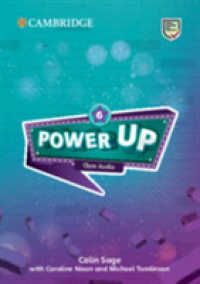基本説明
Drawing on diverse cinematic traditions, the study explores landmark repertoire including Coppola's Godfather trilogy, Chabrol's La Cérémonie, Jewison's Moonstruck, Boyd's Aria, and Ponnelle's opera-films.
Full Description
Opera can reveal something fundamental about a film, and film can do the same for an opera, argues Marcia J. Citron. Structured by the categories of Style, Subjectivity, and Desire, this volume advances our understanding of the aesthetics of the opera/film encounter. Case studies of a diverse array of important repertoire including mainstream film, opera-film, and postmodernist pastiche are presented. Citron uses Werner Wolf's theory of intermediality to probe the roles of opera and film when they combine. The book also refines and expands film-music functions, and details the impact of an opera's musical style on the meaning of a film. Drawing on cinematic traditions of Hollywood, France, and Britain, the study explores Coppola's Godfather trilogy, Jewison's Moonstruck, Nichols's Closer, Chabrol's La Cérémonie, Schlesinger's Sunday, Bloody Sunday, Boyd's Aria, and Ponnelle's opera-films.
Contents
Introduction; Part I. Style: 1. Operatic style in Coppola's Godfather trilogy; 2. Opera as fragment: 'Liebestod' and 'Nessun dorma' in Aria; Part II. Subjectivity: 3. Subjectivity in the opera-films of Jean-Pierre Ponelle; 4. Don Giovanni and subjectivity in Claude Chabrol's La Cérémonie; Part III. Desire: 5. 'An honest contrivance': opera and desire in Moonstruck; 6. The sound of desire: Così's 'Soave sia il vento' in Sunday, Bloody Sunday and Closer; Epilogue; Bibliography; Filmography and videography.



![はじめてでもここまでできる Stable Diffusion画像生成[本格]活用](../images/goods/ar2/web/imgdata2/42971/4297140837.jpg)




